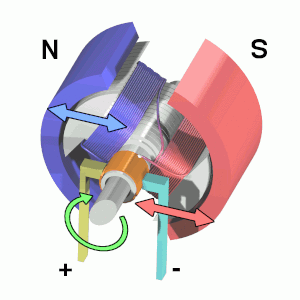
- Image via Wikipedia
What worked for cars can work for trains: railway engines will soon be hybrid
TAKE a car, add an electric motor and some batteries. Build in a special gearbox which combines the output of the motor with that of an internal-combustion engine. Now all you need is a sophisticated electronic control system, and the result is a hybrid car like the Toyota Prius. It saves fuel, because when the driver brakes the car stores the lost kinetic energy in the battery, and when the driver hits the accelerator the electric motor kicks in, using that stored energy. But it took Toyota 13 years to convince customers that the Prius principle is the technology of the future.
Now, it seems, it has convinced builders of railway engines, too. Like carmakers, they are trying to combine internal-combustion engines and electric motors to save fuel. “Development is so advanced now, that we can use it, too,” says Peter Rieger of MTU, a German engine-builder. The main difference is that whereas the carmakers were able to design new vehicles around their new technology, locomotive-builders have had to construct their hybrid engines as packages that can replace the original motors of existing machines.
As with cars, Japan leads the way. After a three-year trial JR East, a privately owned railway company, announced that it would introduce ten diesel-battery hybrid railcars. This would be the first fleet of hybrid diesel multiple units. The system is expected to reduce fuel consumption by 10% and to be much quieter than the current arrangement. But, unlike the European car industry, the European rail industry is not far behind Japan. MTU, for example, has developed a hybrid engine-gear package which can simply replace a conventional motor. Its engineers added an electric motor and a special gearbox to combine the output of both engines. All the components are built into a frame, which can be put into the space the old engine occupied.
Other manufacturers have similar ideas. Voith Turbo, a German company known for its diesel-hydraulic transmissions, has linked up with MAN, an engine-builder, to develop a hybrid power-pack that could replace conventional drives. And, in America, General Electric (GE) is also working on a hybrid engine. This will be equipped with a large number of batteries that store the kinetic energy otherwise dispersed when the locomotive is stopping long freight trains. That will reduce fuel consumption by about 15%.
Which is not enough for the engineers at the German branch of Alstom. They have converted an old heavy shunter into a hybrid, slashing its fuel consumption by 40-50%, according to Klaus Hiller, who is in charge of the project. To do so, the company turned the Prius principle upside down. The main motive power comes from two large batteries. The diesel is merely a backup.










